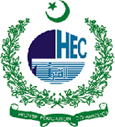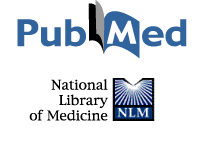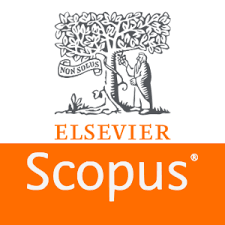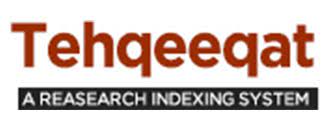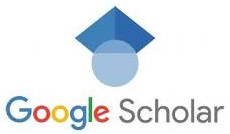FREQUENCY OF PERCUTANEOUS ACHILLES TENDON TENOTOMY IN CLUB FOOT CHILDREN TREATED BY PONSETTI METHOD IN ORTHOPAEDIC A WARD OF AYUB TEACHING HOSPITAL ABBOTTABAD
DOI:
https://doi.org/10.55519/JAMC-01-13580Keywords:
Ponseti Method, Clubfoot, CongenitalAbstract
Background: The Ponseti technique of congenital clubfoot therapy includes interventional Achilles tenotomy. The goal of this research was to evaluate the frequency and effectiveness of interventional Achilles tenotomy in the Ponseti method's conservative management of congenital clubfoot. Methods: Between August 2023 and June 2024, a randomized controlled trial was conducted of all congenital club foot deformity patients between the ages of 0 and 2 years who visited our clubfoot clinic was conducted. Upon presentation, each clubfoot had a clinical evaluation, a Pirani grading system rating, and a Ponseti procedure cure. The distribution and associations of percutaneous Achilles tenotomies were statistically examined using IBM SPSS version 26. Results: Ninety-seven individuals in all, 147 of them had a club foot, were examined. Midfoot contracture score (MFCS), hindfoot contracture score (HFCS), and total Pirani score (TPS) medians were 4.5, 2.5, and 2.5, respectively, upon presentation. 66.4% (97) feet belonging to 63 individuals had percutaneous Achilles tenotomies done. With an initial total Perini score of 3.0 or higher, 85 out of 108 feet needed percutaneous Achilles tenotomy to correct the problem (p-0.001). Conclusion: A tenotomy rate of 66.4% was seen while treating bilateral clubfoot by using the Ponseti procedure. Percutaneous Achilles tenotomy was required when the patient had high Pirani ani scores and was becoming older at the time of presentation.
References
1. Perez EP, Parenti S, Polk J, Jo C, Riccio AI. The Ponseti method for the treatment of clubfeet associated with Down syndrome: A single-institution 18-year experience. J Pediatr Orthop 2023;43(2):e106–10.
2. Vinyals Rodriguez M, Ey Batlle A, Jordan I, Míguez González P. Quantification of procedure time and infant distress produced (as crying) when percutaneous Achilles tenotomy is performed under topical local anaesthesia: A preliminary study. Int J Environ Res Public Health 2022;19(21):13842.
3. Chobisa S. Analysis of Ponseti method in congenital talipes equinovarus (CTEV). Eur J Mol Clin Med 2022;9(4):3496–3510.
4. Rangasamy K, Baburaj V, Gopinathan NR, Sudesh P. Techniques, anaesthesia preferences, and outcomes of Achilles tenotomy during Ponseti method of idiopathic clubfoot correction: A systematic review. Foot. 2022;52:101922.
5. Addar A, Bouchard M. Clinically detected leg length discrepancy in patients with idiopathic clubfoot deformity: Prevalence and outcomes. J Pediatr Orthop 2022;42(7):e772–6.
6. Gupta V. Outcome of Ponseti technique for the management of congenital talipes equinovarus at a district hospital. Eur J Mol Clin Med 2022;9(6):1969–73.
7. Barbhuiya SA, Nair AB, Dhar A. Standard and accelerated Ponseti technique in management of idiopathic congenital talipes equinovarus: A comparative study. Int J Orthop Sci 2022;8(1):710–4.
8. Khan MJ, Ganesan B, Fong KNK, Yip J, Hoque MF, Hasan SM, et al. Factors predictive of Ponseti casting for treating clubfoot: Analysis of Bayesian Poisson regression model. Eur Rev Med Pharmacol Sci 2022;26(6):1868–75.
9. Mahmood T, Chishti MK, Shafee M, Rasool A, Ahmad MF. Outcome of Ponseti method of manipulation and casting for idiopathic clubfoot at Nishtar Medical University Hospital Multan. J Pak Orthop Assoc 2022;34(1):35–9.
10. Prabakaran N, Rao KC, Bandari D, Kumar BS, Satyanarayana J. An observational study on management of idiopathic CTEV by Ponseti method. Eur J Mol Clin Med 2022;9(2):5945–8.
11. Ikechukwu OC, Ugochukwu EN, Onyekachukwu EO, Damian OC. Comparison of blade and needle tenotomy for treatment of residual equinus in idiopathic clubfoot. Int J Med Sci Clin Invent 2022;9(2):5945–8.
12. Nahle IS, Miron MC, Grimard G, Abu Zeid A, Glavas P. Ultrasound measurements in clubfoot treated with the Ponseti method and risk factors for recurrence: A retrospective study. J Child Orthop 2022;16(1):46–54.
13. Akinyoola LA, Gunderson Z, Sun S, Fitzgerald R, Caltoum CB, Christman TW, et al. Association of socioeconomic status with relapse after Ponseti method treatment of idiopathic clubfeet. Foot Ankle Orthop 2022;7(3):24730114221119180.
14. Ahmad S, Ahmed S, Zahra M, Hanif A, Hussain B, Kashif M. Management of spina bifida related non-idiopathic clubfoot with Ponseti's method. Pak J Med Health Sci 2022;16(5):278.
15. Hegazy M, El Barbary H, Hammoud M, Arafa A, Mohamed MT, Barakat AS, et al. The foot external rotation above-knee (FERAK) brace versus the Denis Browne brace for management of idiopathic clubfoot following Ponseti casting: A randomized controlled trial. Int Orthop 2022;46(2):313–9.
16. Ahmed S, Moosa S, Muhammad AA, Iftikhar S, Khan MA, Chinoy MA, et al. Eight-year review of a clubfoot treatment program in Pakistan with assessment of outcomes using the Ponseti technique: A retrospective study of 988 patients (1,458 clubfeet) aged 0 to 5 years at enrollment. JAAOS Glob Res Rev 2022;6(4):e22.
17. Riemen AH, Lim JW, Wong KY, Campbell D, Pease FJ, Barker SL. Current understandings in congenital talipes equinovarus. Orthop Trauma 2022;36(6):295–303.
18. Doshi RP, Gokhale S, Ng SM, Carpenter C. Bilateral pseudoaneurysms following percutaneous Achilles tenotomy for congenital talipes equinovarus. Cureus 2022;14(11):e31345.
19. Williams B, Gil JN, Oduwole S, Blakemore LC. Semirigid fiberglass casting for the early management of clubfoot: A single-center experience. Cureus 2022;14(2):e22045.
20. Rangasamy K, Baburaj V, Gopinathan NR, Behera P, Sudesh P, Subramanian SR. Correction results of atypical clubfeet managed with modified Ponseti technique: A meta-analysis of 354 feet. J Clin Orthop Trauma 2022;31:101939.
21. Li J, Xu C, Li Y, Liu Y, Xu H, Canavese F. Are early antero-posterior and lateral radiographs predictive of clubfoot relapse requiring surgical intervention in children treated by Ponseti method? J Child Orthop 2022;16(1):35–45.
22. Ralahy FM, Andriamasinilaina JL, Stannage K, Gray JL, Solofomalala DG. Manipulation of a clubfoot prior to a Ponseti method decreases the need for tenotomy! Medicine (Baltimore) 2022;101(32):e29645.
23. Saeed HS, Manzoor B, Sarwar MU, Rasheed N, Manzoor I, Elahi MOI. Treatment of club foot with serial casting by Ponseti technique. Prof Med J 2022;29(6):802–6.
24. Chandan D, Hathwar KK. Comparative study of functional outcome of idiopathic congenital talipes equinovarus treated between Ponseti technique and accelerated Ponseti technique using Pirani score. J Bones Muscles Health 2022;1(1):17.
25. Servino TA, Tatiana RA, Hanitriniony R, Duval SG. Results of Ponseti method in the management of the congenital clubfoot. Open J Ther Rehabil 2022;10(3):101–10.
26. Scanlan E, Grima-Farrell K, Ilhan E, Gibbons P, Gray K. Initiating Ponseti management in preterm infants with clubfoot at term age. J Child Orthop 2022;16(2):141–6.
27. Özdemir MA, Topak D, Turgut C, Telek M, Doğar F. Evaluation of depression, anxiety, and stress status in parents of patient with congenital clubfoot treated with Ponseti method: A prospective study. Medicine (Baltimore) 2022;101(44):e31654.
28. Sharma R, Kumar A, Sinha S, Jameel J, Khan R, Kumar S. Effectiveness of needle tenotomy for correction of of equinus in clubfoot. Cureus 2022;14(11):e32080.
29. Pavone V, Sapienza M, Vescio A, Caldaci A, McCracken KL, Canavese F, Testa G. Early developmental milestones in patients with idiopathic clubfoot treated by Ponseti method. Front Pediatr 2022;10:869401.
30. Wijnands SDN, van der Steen MC, Grin L, van Oorschot L, Besselaar AT, Vanwanseele B. Muscle-tendon properties and functional gait outcomes in clubfoot patients with and without a relapse compared to typically developing children. Gait Posture 2022;93:47–53.
Downloads
Published
How to Cite
Issue
Section
License
Copyright (c) 2025 Asghar Khan, Amina Gul Shehzar Khan, Muhammad Faizan Aziz, Safeer Ullah, Abid ur Rehman

This work is licensed under a Creative Commons Attribution-NoDerivatives 4.0 International License.
Journal of Ayub Medical College, Abbottabad is an OPEN ACCESS JOURNAL which means that all content is FREELY available without charge to all users whether registered with the journal or not. The work published by J Ayub Med Coll Abbottabad is licensed and distributed under the creative commons License CC BY ND Attribution-NoDerivs. Material printed in this journal is OPEN to access, and are FREE for use in academic and research work with proper citation. J Ayub Med Coll Abbottabad accepts only original material for publication with the understanding that except for abstracts, no part of the data has been published or will be submitted for publication elsewhere before appearing in J Ayub Med Coll Abbottabad. The Editorial Board of J Ayub Med Coll Abbottabad makes every effort to ensure the accuracy and authenticity of material printed in J Ayub Med Coll Abbottabad. However, conclusions and statements expressed are views of the authors and do not reflect the opinion/policy of J Ayub Med Coll Abbottabad or the Editorial Board.
USERS are allowed to read, download, copy, distribute, print, search, or link to the full texts of the articles, or use them for any other lawful purpose, without asking prior permission from the publisher or the author. This is in accordance with the BOAI definition of open access.
AUTHORS retain the rights of free downloading/unlimited e-print of full text and sharing/disseminating the article without any restriction, by any means including twitter, scholarly collaboration networks such as ResearchGate, Academia.eu, and social media sites such as Twitter, LinkedIn, Google Scholar and any other professional or academic networking site.



